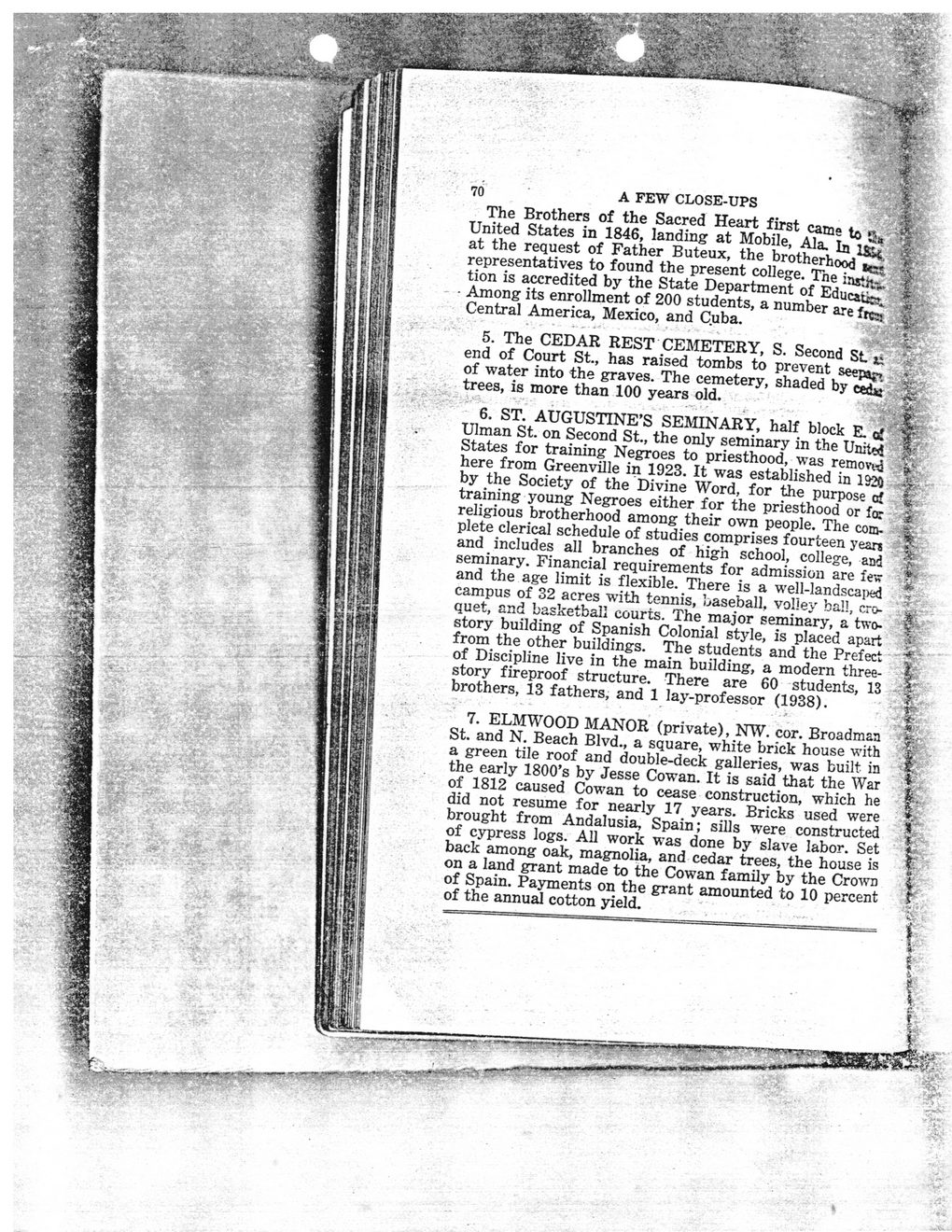This text was obtained via automated optical character recognition.
It has not been edited and may therefore contain several errors.
70 A FEW CLOSE-UPS f The Brothers of the Sacred Heart first came to n % United States in 1846, landing at Mobile, Ala. In % at the request of Father Buteux, the brotherhood *5; jit" representatives to found the present college. The instfr? H tion is accredited by the State Department of Educated -Among its enrollment of 200 students, a number are Central America, Mexico, and Cuba. 5. The CEDAR REST CEMETERY, S. Second St ** 3*. end of Court St., has raised tombs to prevent seepa^, ? of water into the graves. The cemetery, shaded by 3jr trees, is more than 100 years old. 6. ST. AUGUSTINE’S SEMINARY, half block E. o£ Ulman St. on Second St., the only seminary in the United States for training Negroes to priesthood, was remove ^ here from Greenville in 1923. It was established in 1920 by the Society of the Divine Word, for the purpose aI § training young Negroes either for the priesthood or fa: religious brotherhood among their own people. The com- .§ plete clerical schedule of studies comprises fourteen year* ? and includes all branches of high school, college, and | seminary. Financial requirements for admission are fevr | and the age limit is flexible. There is a well-landscaped * campus of 32 acres with tennis, ’jaseball, volley ball, cro- * quet, and basketball courts. The major seminary, a two- '*j story building of Spanish Colonial style, is placed apart § from the other buildings. The students and the Prefect * of Discipline live in the main building, a modern three- j story fireproof structure. There are 60 students, 13 * brothers, 13 fathers, and 1 lay-professor (1938). 7. ELMWOOD MANOR (private), NW. cor. Broadman St. and N. Beach Blvd., a square, white brick house with a green tile roof and double-deck galleries, was built in the early 1800’s by Jesse Cowan. It is said that the War of 1812 caused Cowan to cease construction, which he did not resume for nearly 17 years. Bricks used were brought from Andalusia, Spain; sills were constructed of cypress logs. All work was done by slave labor. Set back among oak, magnolia, and cedar trees, the house is on a land grant made to the Cowan family by the Crown of Spain. Payments on the grant amounted to 10 percent of the annual cotton yield.

BSL 1930 To 1949 MS Gulf Coast WPA American Guide Series (7)